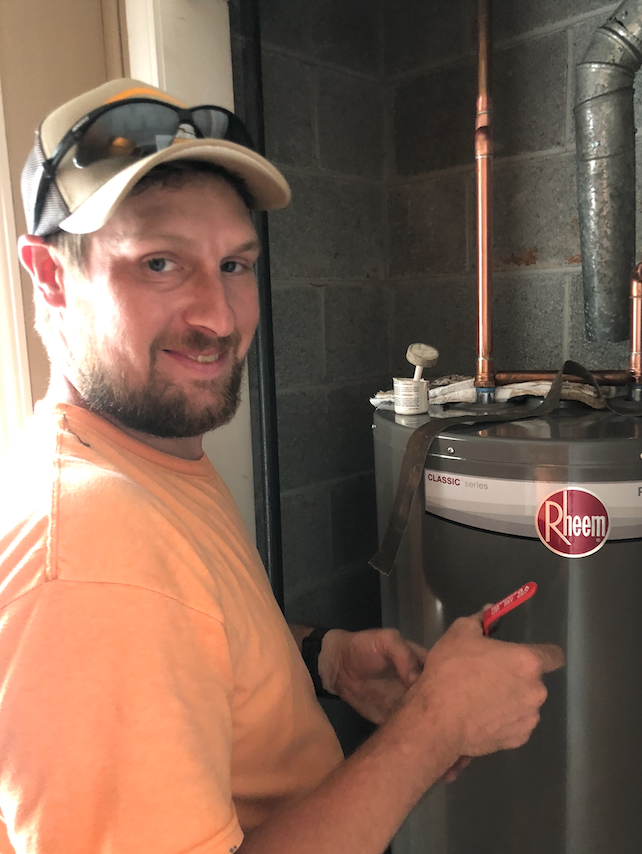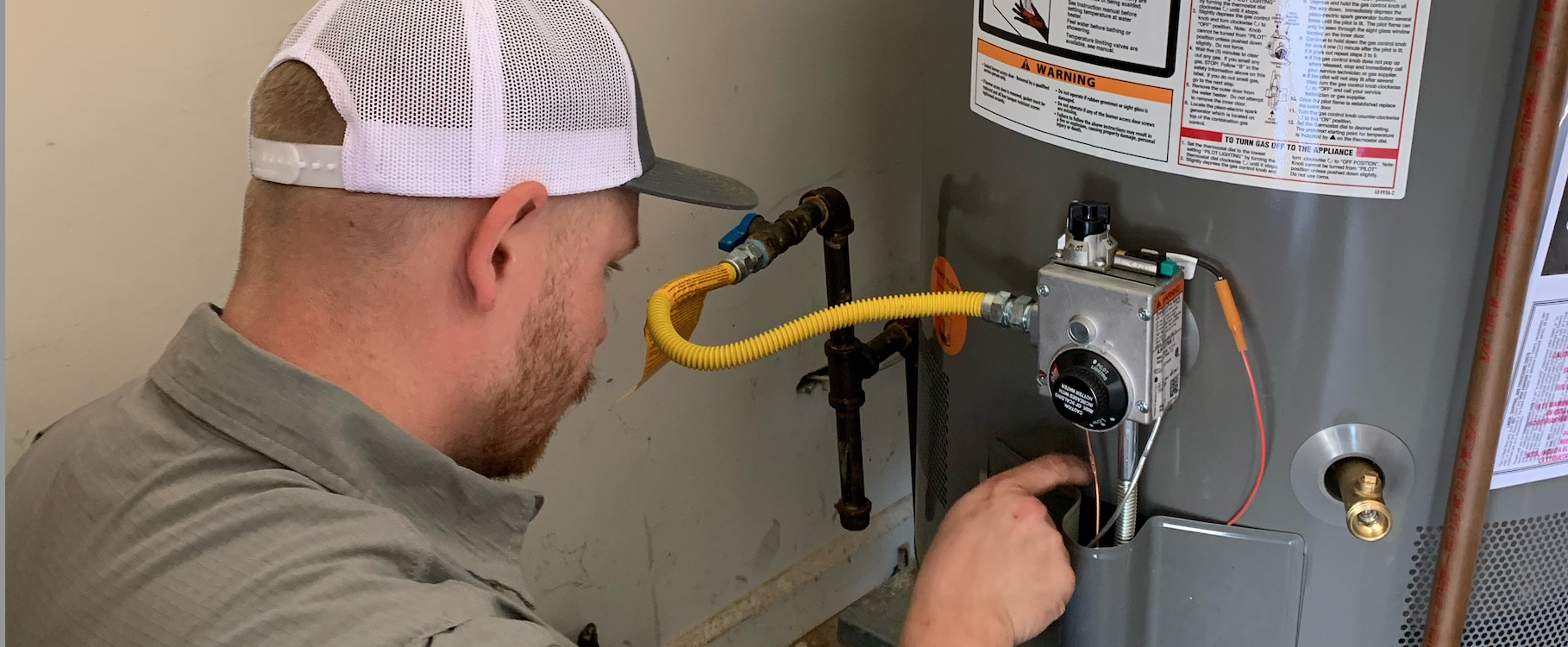Water heaters are meant to last a long time, but a simple problem can cause major issues if not caught in time. Mac Plumbing, Heating & Air wants you to get to know this important part of your home and how to keep it working properly.

Basics of a Hot Water Heater
- Whether you have an electric or gas water heater, the inner workings are basically the same.
- Cold water enters the unit from a cold water valve.
- You need to especially be aware of the location of this shut off valve.
- The inlet pipe on the top of the unit sends cold water to the bottom of the tank through a dip tube. This tube keeps the cold water from cooling down the hot water that’s already in the tank.
- Finally, hot water leaves the tank from the outlet at the top.
Pressure Relief Valve
- All water heaters must be protected with a relief valve or TPR (temperature Pressure relief valve)
- This valve lets water escape if the temperature or pressure is too high in the tank.
- It keeps the tank from blowing up.
- Newer model tanks have the valve located on the side of the tank.
Cold Water Shut-off Valve
- This valve should be on the supply side near the water heater itself. In case of an emergency, know where the valve is located and know hot to turn it off.
Drain Valve
- Your drain valve is located at the base of the tank.
- You should drain a few gallons of water out several times a year. It’s important to get rid of sediment buildup in the tank.
Drip Pan
- Your water heater should be sitting in a drip pan to keep leaks from causing damage to your floor, especially if the water heater is located inside the dwelling on a wood floor.
- The best placement for a water heater is in a basement or garage next to an outside wall, as this meets most code regulations.
Expansion Tank
- Allows for the expansion of water as it turns hot.
- As water gets hotter, it expands, and the pressure inside the tank rises. An expansion tank prevents pressure from building inside the tank.
Thermostat
- While water heaters are typically set to 140 degrees, turning it down to 120 degrees is safer (especially if you have small children) and cost efficient.
- The thermostats can be adjusted using a screwdriver on electric water heaters, while gas water heaters typically have a dial.
Water heater problems?
It’s a good idea to have a professional, like Mac Plumbing, Heating & Air check out your water heater, before any problems arise.
But if you find yourself with plumbing or HVAC problems, contact Mac Plumbing Heating & Air here or call us at (931) 552-5555.

